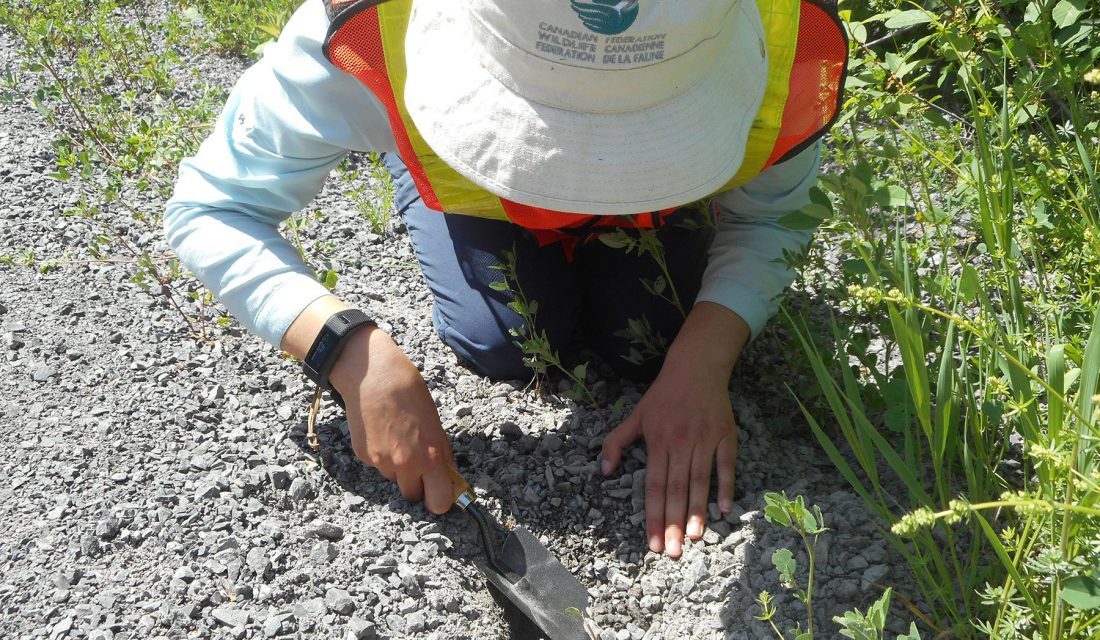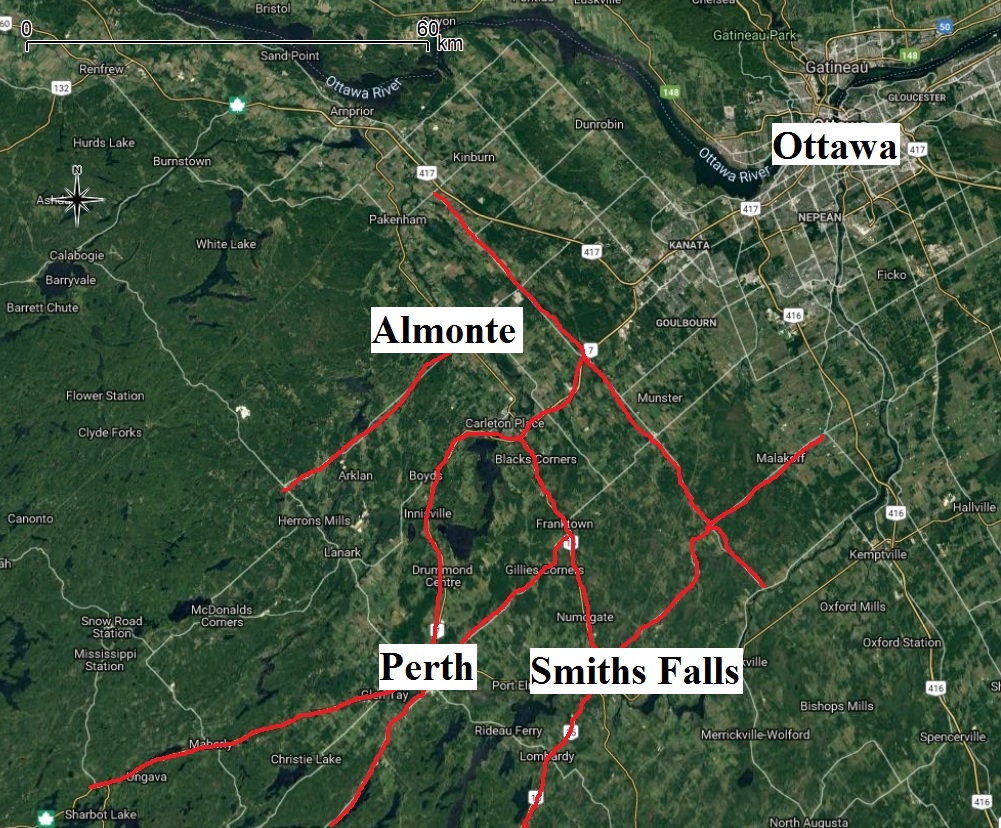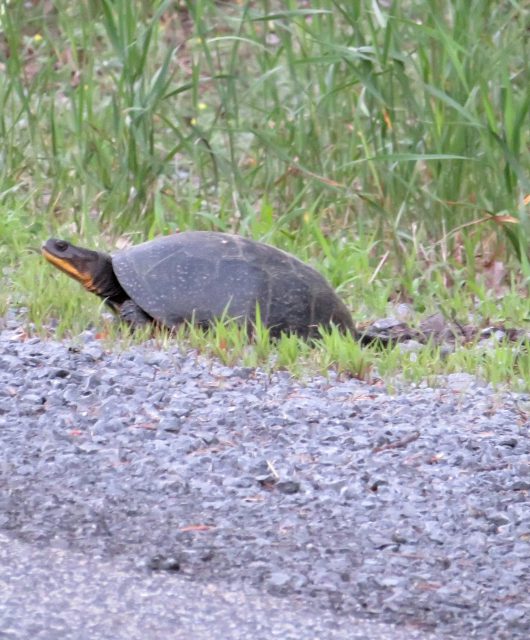Turtles and roads are a dangerous combination.
When turtles leave their wetlands on an overland trek, they often have to cross a road to get where they are going. Their destination may simply be the wetland across the road, or a nesting site for an adult female to lay her eggs. Whatever the reason for setting out, the result is often a dead turtle on the road.
Turtles are slow, which increases their risk of being hit by a car or truck as they cross a road. In addition, a turtle’s reaction to danger is often to pull in their head and legs and remain immobile. Unfortunately, remaining immobile on a busy road turns a turtle into a sitting duck.
Road Survey Results

Over the past two years, the CWF turtle team has been conducting road surveys in the greater Ottawa area to find out where turtles are getting hit on the roads.
Tragically, we have found more than 1,000 dead turtles on roads.
That is a staggering amount of roadkill that is likely not sustainable in the long term. We are working hard to get wildlife fencing installed at two of the locations where we found the most turtles on roads near Ottawa.
We found more turtles on some roads than others. A lot of things affect how many turtles are found on a given road, such as the length of the road, the traffic volume, how many wetlands are nearby, and how often the road is surveyed.
Turtles can be on the move from May to September but much of the movement occurs in June when adult females are looking for nesting locations. It is always a good idea to be alert for turtles when driving in the spring and summer.
If you can slow down when approaching wetlands this can increase the odds of seeing a turtle on the road before it is too late. And while it is good to be watching for turtles on any rural road, we can now say which roads in the Ottawa area cause the most mortality for turtles.
So if you are driving near Ottawa this spring and summer, be extra careful on the following roads:

- #7 (west of Carleton Place)
- #10 (southwest of Perth)
- #15 (south of Carleton Place)
- Dwyer Hill Rd (western Ottawa)
- Roger Stevens Drive (southern Ottawa)
- Wolf Grove Rd (west of Almonte)
(These roads are ordered alphabetically. We have not attempted to rank these roads by the number of turtles as not all roads were surveyed the same amount.)
Not surprisingly these are all relatively long and busy roads. Various other shorter roads also had a number of dead turtles, just not as many as these roads. It is a dangerous place out there for turtles. Please watch for them as they try to cross our roads.






1 comment
Who pays for these turtle fences?